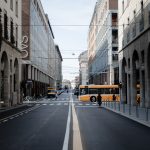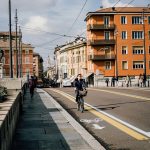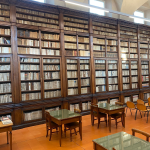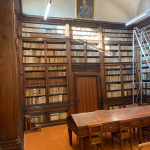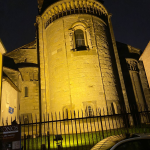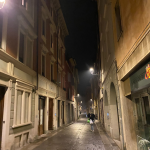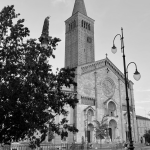Located in the charming city of Piacenza, the University of Parma is a recent addition to the Italian academic landscape, having started operations in October 2021. This came as a surprise to many students who were previously unaware of the university’s existence. Despite being a new player in the field, the University of Parma has already started attracting students from around the world, particularly for its Medicine and Surgery program, which is taught in English. In fact, Cole, one of our very first students who passed the International Medical Admissions Test (IMAT), is currently studying Medicine and Surgery at the University of Parma. Cole has shared his experience with the university on our website, and you can find his review here.
Content Quick Navigation
Studying at the University of Parma is a unique experience, and we have collected information from various sources to bring you a comprehensive guide to this exciting new institution. The University of Parma has lecture halls in different locations around the city of Piacenza, which is a hub for academic excellence, rich cultural heritage, stunning architecture, and exquisite cuisine. Parma is also home to some of Italy’s most celebrated universities, and the University of Parma is quickly establishing itself as one of the top institutions in the country.
To help you make an informed decision, we spoke to Cole, who gave us some insights into his experience studying Medicine and Surgery at the University of Parma. According to Cole, the university has state-of-the-art facilities, excellent professors, and a supportive academic community. He also highlighted the university’s commitment to research and innovation, which he found inspiring.
In the following sections, we will take a closer look at the admission requirements, academic programs, campus facilities, and student life at the University of Parma. We will also share some student reviews to give you an idea of what it’s like to study at this exciting new institution.
Parma IMAT Minimum Scores
| Year | Minimum Score (Non-European) | European Scores (First/Last Round) |
|---|---|---|
| 2020 | N/A | N/A |
| 2021 | 35.5 | First: 44.5 / Last: 35 |
| 2022 | 41.9 | First: 44.4 / Last: 35 |
| 2023 | 50.1 | First: 37.6 / Last: 35.3 |
How Many Seats are Available for Medicine in English at Parma?
If you’re considering studying Medicine and Surgery at the University of Parma, you may be wondering how many seats are available for international students. The good news is that there are quite a lot of seats dedicated to international students, making it an attractive option for students from around the world.
As a new university, the University of Parma is not as competitive as some of the more established institutions in Italy. This, coupled with the fact that there are a significant number of seats available for international students, has allowed for a lower admission score than some other universities in Italy.
For the Medicine and Surgery program taught in English, there are 60 seats available for European students and 40 seats available for non-European students who want to study in Italy. This allocation of seats allows for a diverse student body, with individuals from different backgrounds and nationalities coming together to study at the University of Parma.
It’s important to note that the admission process is competitive, and meeting the minimum admission score requirements does not guarantee acceptance. However, with a significant number of seats dedicated to international students, the University of Parma is an excellent option for those looking to study Medicine and Surgery in English in Italy.
In the next section, we will take a closer look at the admission requirements for the Medicine and Surgery program at the University of Parma.
The History of The University of Parma
University of Parma
Parma, a Roman colony since 183 BC, has always had political importance due to its central geographical position. During the Byzantine period, it assumed the name of “Chrysopolis,” and it was a fruitful event for Europe since it constitutes the premise of the Palatine Schools, the first contribution to the cultural and political renaissance of the West. There were already schools of liberal arts in the city of Parma in the early Middle Ages showing a propensity for deepening the legal culture. In the 11th-12th century, prominent masters and students from Italy and beyond the Alps flocked to Parma. During the 14th century, with the crisis of the municipal institutions and the affirmation of various lordships, the Studium suffered heavy repercussions. With the advent of the Farnese family, there was a great revival of cultural policy in 1545, and the studium was endowed by Ranuccio I with enormous means, privileges for teachers and students, efficient structures, and institutions that saw their maximum splendor in the 18th century. Today, the University of Parma is a prestigious institution with a focus on agriculture, engineering, medicine, and humanities, among others.
Admission requirements for the Medicine program at the University of Parma
If you’re interested in studying Medicine and Surgery at the University of Parma, it’s important to understand the admission requirements. To study Medicine and Surgery in English at the University of Parma, you will need to pass the International Medical Admissions Test (IMAT). However, if you want to study Medicine and Surgery in Italian, you will need to pass the TOLC-MED exam. It’s important to note that the admission requirements can vary depending on the program and language of instruction.
For the Medicine and Surgery program taught in English, passing the IMAT exam is a requirement for admission. The IMAT exam assesses the general knowledge and skills required for a career in medicine and is designed to be a fair and objective way of assessing candidates’ abilities. The exam covers topics such as biology, chemistry, physics, and critical thinking.
If you don’t speak Italian, we recommend that you focus on the English-taught Medicine and Surgery program. This is because most universities in Italy share professors between the Italian and English courses of Medicine. This means that you will have access to the same quality of education, regardless of the language of instruction.
In addition to passing the IMAT exam, you must also translate documents and apply online. We discussed these steps on our website. Just check the “entrance exam” section of our menu to find out more.
In the next section, we will take a closer look at the academic programs offered at the University of Parma.
Medicine at UNIPR: Course Structure
The University of Parma started its Medicine and Surgery program only in October 2021, which makes it the second year the course has been in operation. While it’s hard to predict what the future will bring, we have gathered some information about the current course structure from Cole, a second-year medical student at the University of Parma.
According to Cole, the first two years of the Medicine and Surgery program at the University of Parma are focused on pre-clinical subjects such as biochemistry, anatomy, histology, physiology, and pharmacology. These subjects lay the foundation for future studies in Medicine and Surgery, providing students with the fundamental knowledge and skills required for a career in healthcare.
The third and fourth years of the program are focused on clinical rotations, where students get hands-on experience in hospitals and healthcare facilities. During this time, students work with patients, observe medical procedures, and learn from experienced medical professionals. The fifth year is particularly unique, as it is dedicated to studying healthcare systems in other countries, with opportunities for training abroad later in the sixth year. This is a valuable experience that is exclusive to the English-taught Medicine and Surgery program at the University of Parma.
This focus on healthcare systems in other countries is particularly interesting for international students looking to pursue a career in Medicine and Surgery, as it provides an opportunity to gain a global perspective on healthcare. The training opportunities available in the sixth year also provide a unique opportunity for students to gain practical experience in a foreign healthcare system. We are curious to see how this experience will better prepare international students for post-graduate options and specialization training applications.
The Medicine and Surgery program at the University of Parma is taught in English, which can be beneficial for international students looking to pursue a career in healthcare. The program’s structure is designed to provide students with a well-rounded education, combining theoretical knowledge with practical experience in a clinical setting.
The University of Parma’s Medicine and Surgery program is a comprehensive and well-structured course that provides students with a thorough education in the field of healthcare. Here’s a breakdown of the course syllabus and organization:
Semesters 1-3: Morphology, biochemistry, functions
Semester 4: Pathophysiology of diseases and Clinical microbiology
Semesters 5-9: Clinical disciplines and related biomedical technologies
Semester 10: Public health, organization of healthcare systems (in Italy and also countries outside of Italy), reasoned medical therapy, and clinical risk management
Semesters 11-12: Completion of the curricular internship and the qualifying internship + preparation of the degree thesis
Now, let’s take a closer look at the syllabus of the Medicine and Surgery program at the University of Parma:
1st Year – The first year of the program is focused on building a strong foundation in the fundamental knowledge and skills required for a career in healthcare. Students will cover topics such as physico-chemical bases of life, cells and tissues, statistics, research methodology, molecular biology, genetics, and genomics.
2nd Year – In the second year of the program, students will begin to focus on more specialized areas of Medicine and Surgery, including human physiology, immunology, microbiology, disease pathophysiology, clinical microbiology, pharmacology, and biomedical research.
3rd Year – The third year of the program is focused on laboratory medicine, endocrine, metabolic and gastrointestinal diseases, neurological sciences, psychiatry, hematology, oncology, respiratory diseases, allergology, cardiovascular diseases, and biomedical technologies.
4th Year – During the fourth year of the program, students will study clinical immunology, rheumatology, nephrology, urology, musculoskeletal disease, rehabilitation medicine, dermatology, plastic surgery, geriatrics, and functional patient management.
5th Year – The fifth year of the program is dedicated to public health, international health systems, economics, internal medicine, clinical pharmacology, clinical risk management, pediatrics, obstetrics, gynecology, pathology, forensic medicine, and occupational medicine.
6th Year – The sixth and final year of the program is focused on practical training and research, with students completing three clinical rotations in internal medicine, surgery, and community medicine. Students will also prepare a thesis, which is an essential component of the degree.
As you can notice and mentioned before, an interesting aspect of the Medicine and Surgery program at the University of Parma is the focus on studying healthcare systems in other countries during the fifth year, followed by opportunities for training abroad in the sixth year. This unique experience provides students with a global perspective on healthcare, which can be beneficial for those pursuing a career in Medicine and Surgery.
In the next section, we will take a closer look at the campus facilities and resources available to students at the University of Parma.
Practical Experience & Clerkships in Parma
The University of Parma’s Medicine and Surgery program is designed to provide students with a well-rounded education that combines theoretical knowledge with practical experience. The program places a heavy emphasis on hands-on experience, with required clerkships starting as early as the second year. Students will gain experience in a range of healthcare settings, including biomedical research, general medicine and surgery, pediatrics, and gynecology.
One unique feature of the Medicine and Surgery program at the University of Parma is the opportunity for students to complete clerkships abroad. During the sixth year of the program, students can spend a period in European health facilities, with specific agreements activated for this purpose. While it’s unclear if these clerkships are entirely unique to the University of Parma, it’s clear that the program’s emphasis on studying healthcare systems in other countries during the fifth year provides a valuable foundation for this experience.
Here’s a breakdown of how clerkships are structured over the six years:
- 2nd year: Internship in biomedical research (Biomedical Research Clerkship)
- 4th year: Clinical internship in general medicine and general surgery (Clinical Rotation 1)
- 5th year: Clinical internship in pediatrics and gynecology (Clinical Rotation 2)
- 6th year 1st semester (Clinical Rotation 3): This period can be spent in European health facilities with which specific agreements will be activated.
Fees and Grants Offered for Parma UNIPR Students
The fees for the Medicine and Surgery program at the University of Parma range from €150 to a maximum of €2625, depending on factors such as family income and academic merit. However, the university offers scholarships and grants to help students cover these fees.
According to a pamphlet summarizing the details of the program, there are 100% fee-covering grants available to students who need them. Scholarships are also available, depending on the student’s family income or academic merit, which can reduce fees to nothing.
To estimate the fees for a student, the University of Parma uses an ISEE amount, which is equivalent to the Economic Situation Indicator. All students who wish to request a reduction in the amount of university fees and contributions must complete the application on the ER-GO website before November. Applications will not be accepted after the deadline.
Conclusion
The University of Parma’s Medicine and Surgery program is a unique and exciting opportunity for international students looking to pursue a career in healthcare. With a focus on hands-on experience, a well-rounded education, and the opportunity to complete clerkships abroad, the program provides students with the skills and knowledge needed to succeed in the field of Medicine and Surgery.
If you’re considering applying to the University of Parma’s Medicine and Surgery program, be sure to check out the reviews from current and former students on their website. With information on minimum admission scores, campus facilities, and student experiences, the reviews can provide valuable insight into what it’s like to study at the University of Parma.
We hope this article has been informative and helpful in your decision-making process. If you have any further questions about the Medicine and Surgery program at the University of Parma, be sure to reach out to the university directly for more information.




